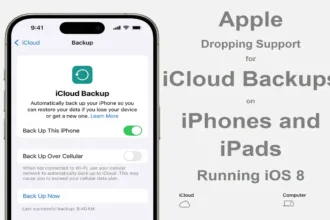Many of us were mesmerized by J.A.R.V.I.S., Tony Stark’s virtual assistant, in the 2008 Marvel film Iron Man.
J.A.R.V.I.S. was initially designed to serve as a G.U.I. Later, an A.I. system was implemented to oversee operations and provide global security.
J.A.R.V.I.S. showed us what might be done with voice recognition technology. Even if we have yet to get there, advances are being used in various settings and with multiple tools.
Hands-free operation of cellphones, speakers, and even vehicles is now possible with the help of speech recognition technologies.
It’s a breakthrough that people have been thinking about and trying to achieve for decades. To put it plainly, the goal is to improve convenience and break the language barrier across the globe.
Due to the wide use of deep learning techniques, automatic speech recognition (A.S.R.) systems have become much more precise in recent years. Improvements have primarily been made in general speech recognition. Geolocation-based language models (Geo- LMS) are customized language models that take a user’s geographic location into account. With these models, Siri can better guess the user’s intended sequence of words by using not only the information from the acoustic model and a general LM (like standard A.S.R.) but also information about the P.O.I.s in the user’s surroundings.
Why is Siri widely being used as a translator
Digital assistants and translation software operate, but how do they know multiple languages? Machine learning is important, but the first process is analog.
Apple’s head of voice Alex Acero says humans initially read passages in many languages and accents. Siri compares the hand-transcribed readings with voice signals. Siri builds a language model and predicts new words and phrases.
Apple uses “dictation mode,” a text-to-speech translator, in the new language once Siri is ready. It cuts, anonymizes, and feeds Siri consumer phrases when they use this service. It helps Siri learn a new language and distinguish voice from noise.
Siri is released with limited capabilities. Acero believes Apple launches Siri with only the most common questions and updates it bi-monthly with anonymized data to expand its capabilities surreptitiously. Siri speaks 21 languages in 36 countries.
Applications of voice recognition and language translation systems powered by artificial intelligence (AI) can have far-reaching positive effects in fields as diverse as government, healthcare, education, agriculture, retail, e-commerce, and finance. Using text-to-speech services, one can have text converted into an artificial voice that sounds very close to human speech and can be tailored to a specific service or brand.
Technology has advanced to the point where it is now possible to have a multilingual email address and input text in various languages for online searches and translations. Deep neural networks (DNNs) are used to create language models to translate complex languages and account for subtleties in language use (such as gender, politeness, and word type) in the process.
How can Siri help you translate languages using “Translate” app?
Apple’s iOS allows you to translate text, voice, and conversations between any of the languages supported by the Translate app. Even without an internet connection, you can download languages to translate on a device.
Make sure you’ve chosen the languages you want to translate between before you try to translate text, voice, or conversations.
Touch the arrows next to the Search Down button and the two languages you want to translate between.
You can start typing by selecting one of the languages or using the microphone to speak.
Next to the language you’re translating from, you’ll see an icon that says “Input Language.”
Tap the other language to change the language you want to use.
Text or voice translation.
Tap translation, and choose the languages you want to translate.
Text to translate: Tap “Enter text,” type or copy and paste a phrase, and tap “Go.”
Translate your voice: Tap the “Listen” button and then say something.
Note that the “Input Language” button tells you what language you’re translating. Tap the other language to change the language you want to use.
Do any of the following when the translation is shown:
Tap the Play button to hear the translation.
Tip: To change how fast the voice plays, touch and hold the Play button.
Where are your translations stored?
Add the translations to your list of favorites: To do this, tap the button that says “Favorite.”
Find out what a word means: Touch the Dictionary button, then touch a word to see what it means.
Tip: Swipe to see your recent history when entering a full screen in the translation app
Natural language processing (NLP) integrates statistical, machine learning, and deep learning models with computational linguistics (modeling human language using rules). When combined, these tools provide computers with the ability to ‘understand’ the whole meaning of human language, including the speaker’s or writer’s intent and sentiment, in the form of text or audio data.






